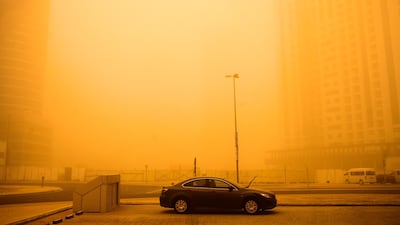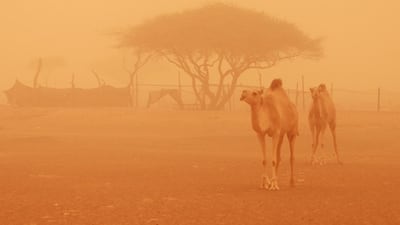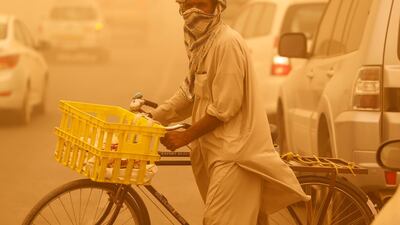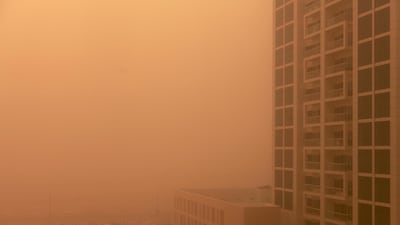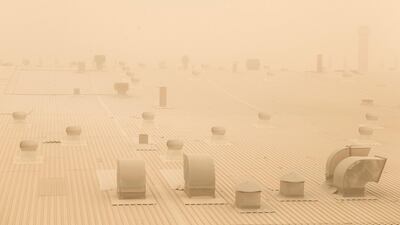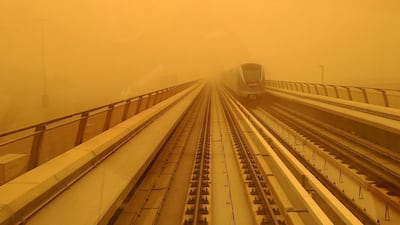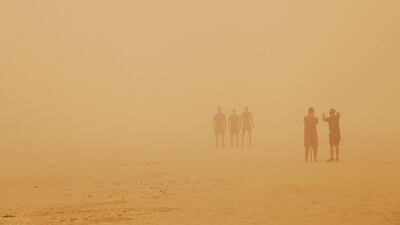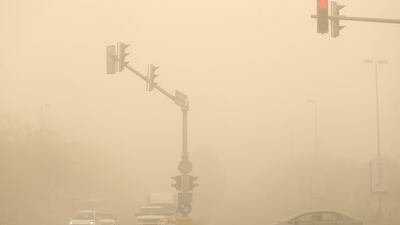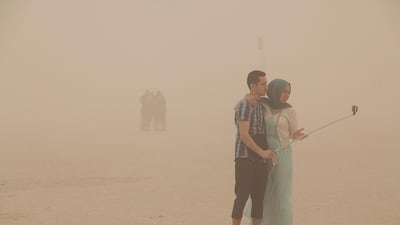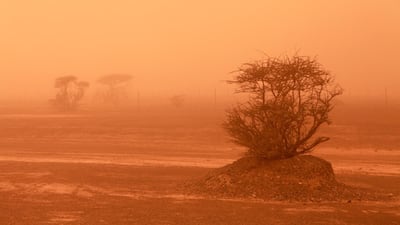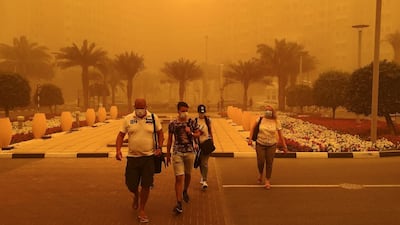In early September 2015, a thick cloak of dust covered the Arabian Peninsula as cyclones from Iraq swept south across the Gulf.
The storms were more severe than anything found in 20-year records. This wasn’t the light, fine powder found on a car windscreen after a typical summer sandstorm. More than 250 tonnes were picked up over northwest Iraq and dropped over the Arabian Gulf over five days, obscuring the sun and turning skies amber.
Such intense dust storms may become more common in the Gulf as the arctic warms, according to a new UAE-led study published in the journal of Geosciences.
The findings link dust storms to changes in the polar jet stream, the fast moving air currents that regulate the earth’s weather systems. Jet streams move between 129 to 400 kilometres per hour at a height nine to 12 kilometres above sea level. But with climate change, they are slowing down.
Weaker jet streams have already been linked to accelerated glacial melting in Greenland and changing weather patterns over North Africa. Now researchers are turning their attention to how changing air currents in the north impact the Gulf.
“We know the polar jet is changing and we’re seeing more severe weather,” said Diana Francis, an atmospheric scientist at New York University Abu Dhabi who led the study.
“Something that can happen very far from the Middle East can have an impact in our area because all is connected in the earth system.”
Jet streams form a border between hot and cold air. Rising temperatures in the polar regions mean the temperature difference that regulates the jet stream is out of order, with profound consequences on the earth’s weather systems.
The research is part of Dr Francis’ work on wind systems and mineral dust, a fundamental aspect of understanding changing climate.
Mineral dust isn’t like the balls of fluff found under the bed. It’s the nutrient rich, heavy particles whipped up from deserts and arid regions and it can seed clouds, lower temperatures, fertilise forests and seas. It can also be extremely damaging to health and agriculture, and changing dust movements have been linked to accelerated arctic melting by darkening ice.
If we understand dust emissions, we can build better models to predict climate change. To understand dust, we must understand why and how dust is emitted from source areas.
Understanding the cause of dust storms is critical to grasp the future challenges facing the Arabian Peninsula.
In this study, researchers looked at the two most severe dust storms on record, which hit the Gulf in late August and early September, 2015.
In the first case, cold air from the polar jet stream was cut off over Turkey and transported to a lower latitude. This cold air pocket settled over Iraq, where it formed a dry cyclone on August 31, whipping up 250 tonnes of dust and causing a five day dust storm that moved southeast over the Arabian Gulf.
A few days later on September 6, the region was hit from a severe dust storm formed over Syria. This time it was caused when a pocket of warm air was cut off over Syria and Turkey. This instability created strong winds and dust walls, known as habub, something more common to North Africa than the Gulf. The storm emitted 400 tonnes of dust.

Both of these events occurred during because of changes in the polar jet stream.
The areas emitting dust are increasing. Rising temperatures and lower humidity over the last decade have dried up soil, releasing more dust into the air we breath.
In the last decade, there has been an unprecedented increase in dust storms in west of the Iranian plateau, especially in the northern floodplains of Iraq.
The north-west of Iraq and east of Syria are considered emerging dusty areas because of extreme drought in the Fertile Crescent, and much of the dust emitted during summer months blows south and is dumped over the Gulf.
The findings from the NYUAD-driven study will improve climate models that predict weather patterns and inform climate change policy.
“This shows that forecasts of such storms may well improve in the coming years as such perturbations are relatively predictable, at least on a time-scale of a day or two,” said Dr John Marsham, an associate professor at the University of Leeds who specialises in tropical meteorology, dust and climate modelling. “It also shows that climate-change induced changes in the jet-stream are expected to affect the frequency of dust storms in this region.
“In depth studies of dust storms in this region are still relatively rare, and it provides useful insight into the important controls on such storms.”
